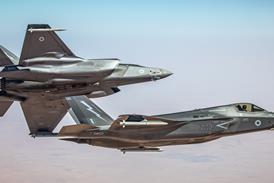Today's computer games fanatics should feel at home in the cockpit of the future if Rockwell Collins' (H4-H4) work on synthetic vision is anything to go by. The company is part of a team working with NASA on what effectively amounts to a windowless cockpit with 3D displays giving the pilot all the information he needs. The displays will show an optimum highway in the sky based on terrain information and sensor input. Tim Etherington, Rockwell Collins' principal systems engineer, says that the company worked with NASA Langley on a windowless cockpit for its HSET High Speed Research aircraft.
This was thought to be better than having a droop nose such as Concorde's. The project involved looking at some realistic 3D imagery and synthetic vision came out of that, he says. Image Synthetic vision uses sensors and enhanced computer graphics to create a virtual image of the aircraft's motion through space. The result is a display that looks like it was lifted from a computerised shoot-em-up game. Our first flight tests will take place in September out of Dallas Fort Worth airport, says Etherington. Dallas isn't very interesting from a terrain standpoint so we have also scheduled further tests in Eagle, Colorado which should be a lot more fun. Eagle is a very interesting approach as it is situated in a valley with high terrain in all directions around the airport. The approaches will be completed blind by the research pilot ¡ using only the enhanced synthetic vision displays.
Source: Flight Daily News























